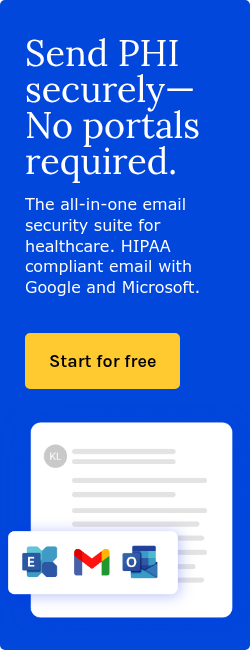2 min read
Data breach at CVR: Risks, impact, and lessons learned
Tshedimoso Makhene
December 28, 2024

Unusual activity was detected in Center for Vein Restoration’s (CVR) IT systems leading to the exposure of personal and medical information for many.
What happened?
A recent data breach at the Center for Vein Restoration (CVR) compromised the personal and medical information of 445,000 individuals. The breach, detected on October 6, exposed sensitive data such as Social Security numbers, medical records, and health insurance details, putting affected individuals at heightened risk of identity theft, financial fraud, and medical identity misuse.
Risks associated with the data breach
The breach at the Center for Vein Restoration has left hundreds of thousands of individuals vulnerable to a range of risks. The exposure of sensitive personal and medical data can lead to serious consequences such as:
- Identity theft: Leaked Social Security numbers, driver’s license details, and financial information can be used to open fraudulent accounts, access financial resources, or commit tax fraud.
- Medical fraud: Stolen medical records and health insurance information could lead to unauthorized use of victims' benefits, fraudulent claims, or altered medical histories.
- Privacy violations: Sensitive health data, such as diagnoses, lab results, and treatment information, could be exploited for blackmail, public exposure, or discrimination.
- Long-term consequences: Unlike credit card details, which can be changed, medical and personal health information is permanent, making the risks enduring.
Related: How do cybercriminals use stolen data?
Lessons learned
The breach at CVR offers important lessons for healthcare organizations and affected individuals alike. Here's what can be learned from this incident:
For healthcare organizations
- Implement proactive cybersecurity measures: CVR detected "unusual activity" in its systems but failed to prevent the breach. Organizations must invest in continuous monitoring, regular system updates, and penetration testing to detect and block threats early.
- Respond swiftly and transparently: CVR's prompt response to notify the Department of Health and Human Services and offer identity theft protection demonstrates the importance of timely communication. An effective, transparent response can help mitigate damage and reassure affected individuals.
- Data encryption: Sensitive information, like medical records and financial details, should be encrypted both in transit and at rest, to minimize exposure in the event of unauthorized access.
- Engage third-party experts: CVR worked with a forensic firm to investigate the breach. Engaging experts can help organizations understand the extent of the damage and provide insights into strengthening future defenses.
- Educate and train staff: Ensuring all employees are well-trained on cybersecurity best practices can prevent errors that lead to breaches, such as clicking on phishing links or mismanaging sensitive data.
For affected individuals
- Monitor credit and financial accounts: CVR’s breach exposed personal financial details, so affected individuals should regularly review credit reports and financial statements for suspicious activity.
- Take advantage of protection services: CVR offered identity theft protection through TransUnion. Individuals should enroll in these services and use the resources provided by CVR to help monitor and protect their personal data.
- Be alert for phishing scams: Cybercriminals often target individuals whose data has been exposed, using phishing emails or phone calls. Affected individuals should be cautious when sharing personal information and be on the lookout for suspicious communications.
- Change passwords and use two-factor authentication: Updating passwords, especially for financial or medical accounts, and enabling two-factor authentication adds an additional layer of security.
FAQs
How can I find out if I've been affected by a data breach?
Organizations affected by data breaches typically notify those impacted through direct communication (e.g., email, letter) or post notices on their websites. You can also check breach notification services or search for breach alerts related to specific organizations.
What should I do if my data is involved in a breach?
If your information has been compromised, immediately change your passwords, monitor your financial accounts and credit reports for unusual activity, and follow any instructions provided by the affected organization, such as enrolling in identity theft protection services.
How can organizations prevent data breaches?
Organizations should implement strong cybersecurity measures, including data encryption, firewalls, access controls, regular audits, employee training, and incident response plans. Regular system updates and monitoring for suspicious activity are also essential.
Subscribe to Paubox Weekly
Every Friday we'll bring you the most important news from Paubox. Our aim is to make you smarter, faster.




